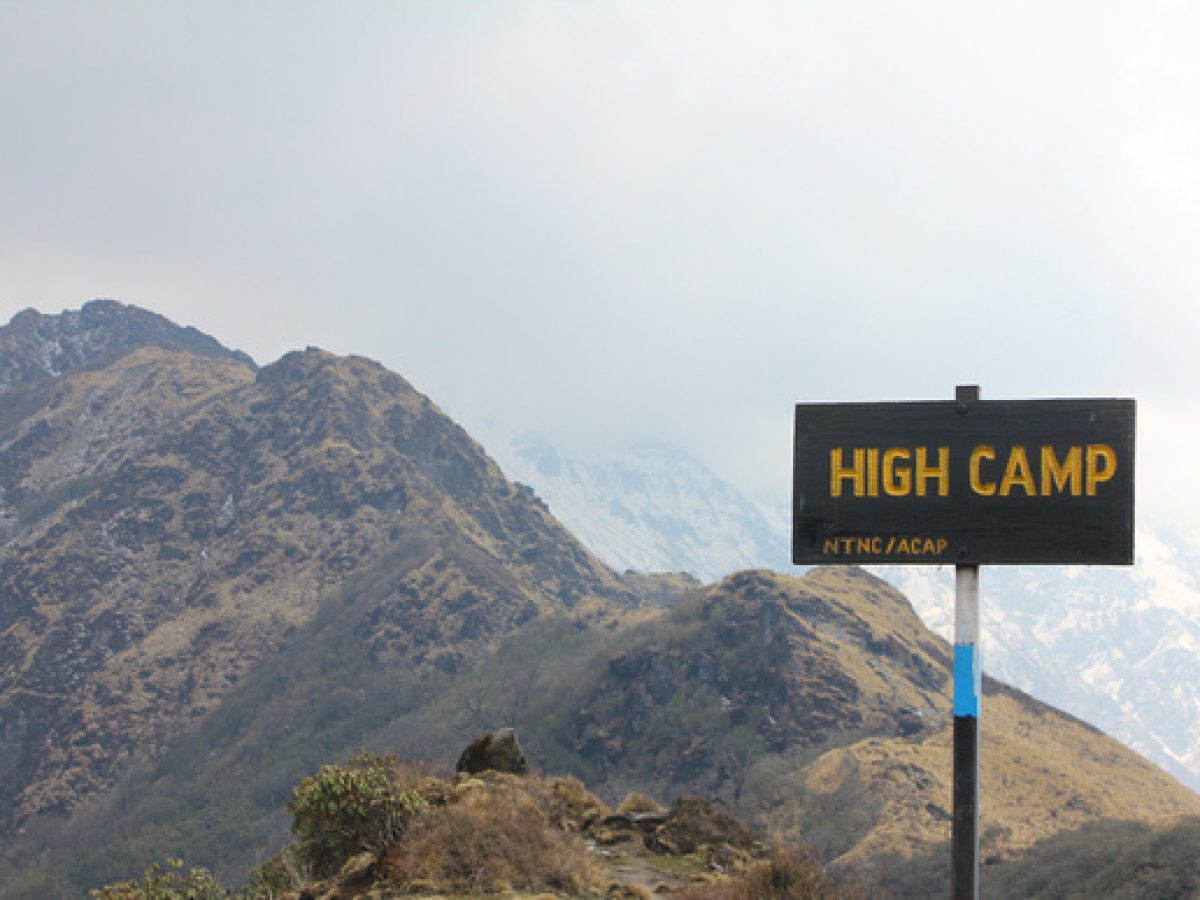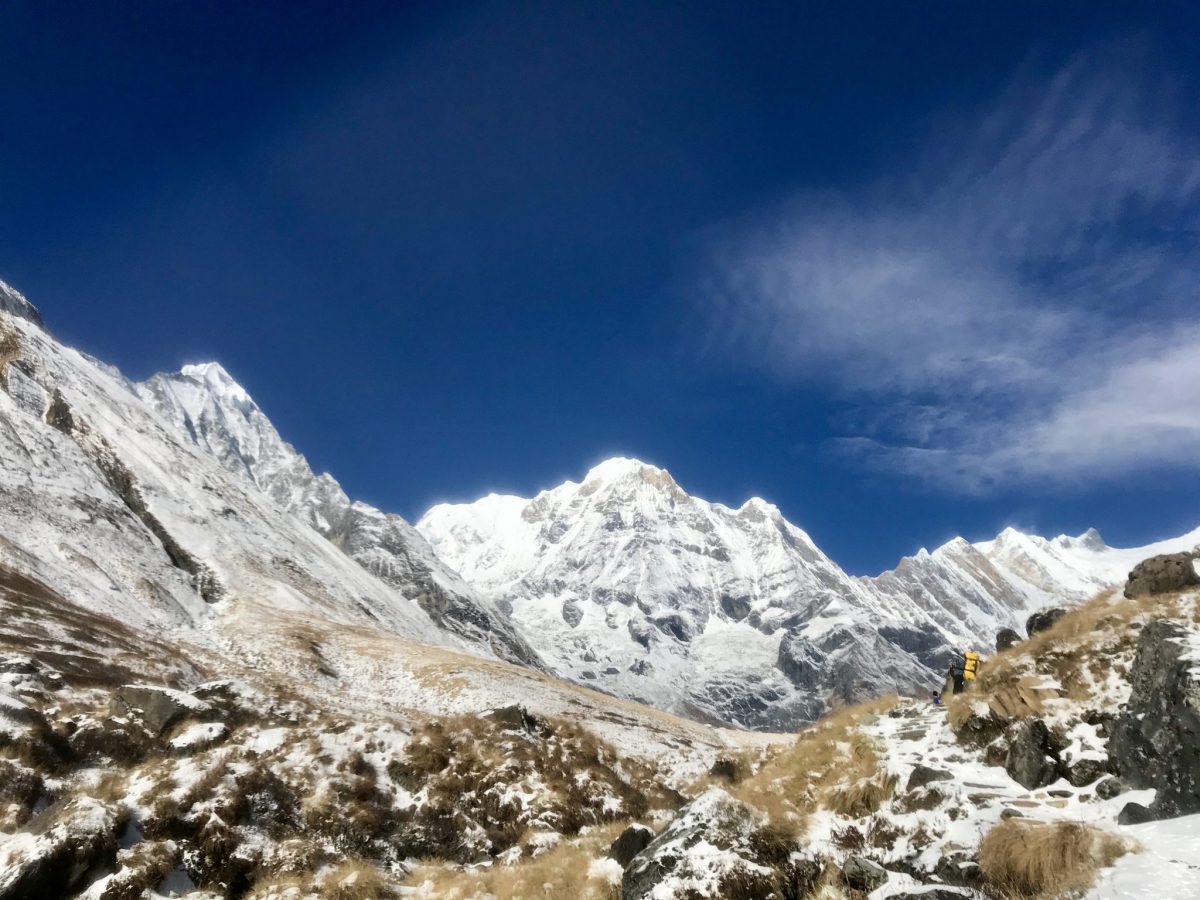If you’re booked on a trek at high altitude for the first time, it’s only natural for you to have some concerns about how this may affect you. Perhaps you’ve heard horror stories about other people suffering from altitude sickness. Or you watched Everest a little too recently for comfort! While altitude definitely needs to be taken seriously, there are a few simple things you can do to minimise its impact on you and adequately prepare so that you can focus on what’s important – enjoying your adventure!

What’s the problem with high altitude?
Most of us simply aren’t designed – or conditioned – to live high in the mountains. As the air gets thinner, the body’s ability to absorb oxygen from the lungs decreases, and the tissues have a harder and harder time getting the oxygen needed for metabolism. In the worst case scenario, this can lead to a state of hypoxia, which simply means ‘reduced oxygen’.
The body does try to acclimatise to these changes to improve oxygen uptake. One way it does this is to increase its breathing rate. The kidneys also send more water to the bladder as urine to rid the body of more fluid – this helps to make the blood thicker and can continue for several weeks. Eventually the body produces a greater number of red blood cells to help increase its oxygen carrying capacity – but it takes time.
 Around 50% of sea-level residents who travel to moderate altitudes (2,400 to 4,250 metres) experience some degree of Acute Mountain Sickness (AMS). This is a collection of symptoms that can resemble the flu or a hangover such as headache, insomnia, shortness of breath, nausea, and weakness. AMS normally settles within a day or so of the initial ascent. In cases, where the symptoms progress the best treatment is to descend 600 to 900 metres.
Around 50% of sea-level residents who travel to moderate altitudes (2,400 to 4,250 metres) experience some degree of Acute Mountain Sickness (AMS). This is a collection of symptoms that can resemble the flu or a hangover such as headache, insomnia, shortness of breath, nausea, and weakness. AMS normally settles within a day or so of the initial ascent. In cases, where the symptoms progress the best treatment is to descend 600 to 900 metres.
If left unchecked, AMS can progress to more serious consequences and these include High-Altitude Pulmonary Edema (HAPE) or High Altitude Cerebral Edema (HACE). In HAPE, body fluids leak into the lungs and interfere with respiration. Symptoms include a hacking cough and increased rates of breathing and pulse. If this is allowed to advance then bubbling noises will become evident during breathing. The key way to treat HAPE is descent and a descent of 900 metres will resolve most cases. In HACE, vessels in the brain may respond to the stress of high altitude by leaking, causing the brain to swell. Early symptoms included reduced coordination, headache and loss of energy. Nausea and vomiting may also be present. HACE can strike at altitudes as low as 3000 metres and descent is critical for survival.
How do I prepare for high altitude?
Some trekkers recommend using medication such as Diamox to prepare for altitude, however these occasionally cause unpleasant side-effects and allergic reactions. More recent studies show Ibuprofen to be an effective alternative with fewer side-effects. Personally, I stay clear of medications (saving them for emergencies only) and recommend the following:
-
Planning and preparation.
The best way to prepare for high altitude is to plan your trek appropriately so that it has a gradual ascent, allowing your body time to acclimatise. A general guideline is to limit increases in sleeping elevation to 300 metres per day above 3,000 metres and, two or three times in a week, allow an additional night at the same elevation as the night before. Take it easy and don’t over-exert yourself.
-
Stay properly hydrated.
Acclimatisation is often accompanied by fluid loss, so you need to drink lots of fluids to remain properly hydrated. The best indication of proper hydration is clear urine.
-
Avoid tobacco, alcohol and other depressant drugs.
These decrease the respiratory drive during sleep, resulting in a worsening of symptoms.
-
Ensure that you are in good health so that your body can acclimatise efficiently.
Research indicates that antioxidants (naturally occurring plant nutrients such as Vitamins C and E) can be effective in preventing AMS. It is recommended that you obtain these antioxidants through eating a nutritious whole food diet.
-
Train properly before your trip.
Increasing your body’s ability to tolerate sustained hard work will improve your muscles’ ability to use oxygen and help reduce the impact of altitude. The best way to do this is through interval training. Learn more about interval training here.
-
Use an altitude chamber for several weeks before your trip.
This is optional, but even a couple of visits to an altitude chamber could help dispel your fears. It can be expensive, though. Personally I’d rather spend an extra day or two acclimatising on a mountain than exercising in a gym!
 At the end of the day, there is no substitute for proper acclimatisation. So plan your trip wisely, following the recommended acclimatisation guidelines. Above all, listen to your body. If you begin to show symptoms of mild to moderate altitude sickness, don’t ascend any higher until symptoms decrease or dissipate. Make sure you alert someone in your party to your symptoms so that they can help monitor them until you are feeling well enough to continue. Your health is more important than your trek schedule, and arriving safely at your destination is more important than arriving quickly. Enjoy your trek!
At the end of the day, there is no substitute for proper acclimatisation. So plan your trip wisely, following the recommended acclimatisation guidelines. Above all, listen to your body. If you begin to show symptoms of mild to moderate altitude sickness, don’t ascend any higher until symptoms decrease or dissipate. Make sure you alert someone in your party to your symptoms so that they can help monitor them until you are feeling well enough to continue. Your health is more important than your trek schedule, and arriving safely at your destination is more important than arriving quickly. Enjoy your trek!
